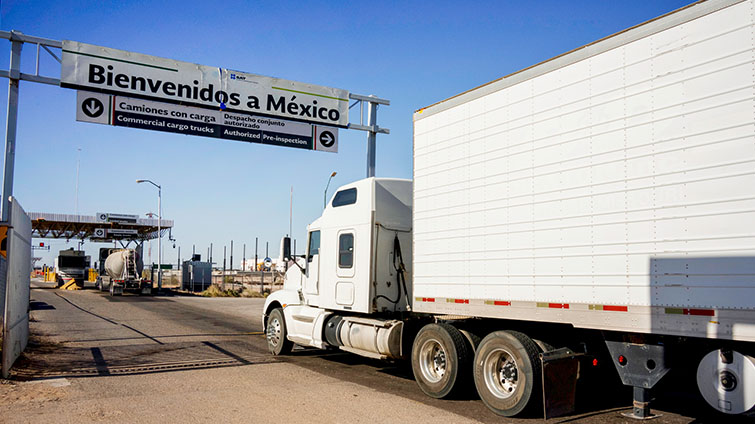Mexico’s automotive production up 12.1%

U.S.–Mexico
While current automotive and manufacturing trends indicate robust short-term freight demand, particularly in automotive industry exports, future growth remains subject to regulatory developments and ongoing trade policy negotiations. The strong performance of Mexico's automotive sector, combined with currency advantages, provides a solid foundation for continued trade momentum.
Cross-border capacity
Even with robust manufacturing and export figures, cross-border capacity remains available. The latest government data suggest carriers have increased their fleets in the past year and are now actively offering attractive rates to secure steady business, especially when shipments include southbound loads into Mexico.
This situation reflects the ongoing freight imbalance, where for every truckload shipped southbound from the United States to Mexico, approximately three truckloads move northbound, driven by strong demand for automotive and electronics exports.
Proficiency in English executive order
On April 28, 2025, the U.S. government announced a reinforced requirement for B1 commercial truck drivers operating within its borders to demonstrate proficiency in English, reaffirming existing regulations first established in 1970.
The executive order emphasizes renewed enforcement rather than creating new rules. Authorities have 60 days to clarify implementation details, with compliance checks expected during routine roadside inspections.
Industry analysts suggest that while this change might modestly impact cross-border freight, especially operations using Mexican drivers on B1 visas, it is not expected to significantly disrupt the current market or driver availability.
Given current freight market conditions and proactive carrier strategies, the practical effects on Mexico–U.S. trucking capacity are anticipated to remain minimal. If B1 drivers return to Mexico, it could help alleviate the current driver shortage the country is experiencing.
Infrastructure grant
The U.S. Department of Transportation recently awarded a $150 million Infrastructure for Rebuilding America (INFRA) grant for the construction of the new Otay Mesa East Port of Entry, located three miles east of the existing Otay Mesa crossing.
The project will include 10 dedicated lanes—five each for passenger and commercial vehicles—and is scheduled to begin construction in fall 2025, aiming for completion by late 2027. This grant includes $36 million allocated specifically for advanced inspection technology.
U.S.–Canada
Cross-border spot freight activity has remained relatively subdued in recent weeks, which is vastly different than the freight environment from late March to early April.
The April 2025 report highlighted the tightness in capacity caused by the convergence of bad weather, rail backlogs, and pre-tariff pull forward. Since then, there has been a sharp shift in the balance of supply and demand.
After the disruptions from weather and rail backlogs, supply was once again freed up into the market, and after the surge of shipments to get ahead of tariffs, demand eased. The combination of these two factors resulted in downward pressure to rates across many lanes.
There was a tightening of capacity, particularly on U.S.-to-Canada lanes, primarily driven by end-of-month pressure to close out April. Northbound rates show steady signs of climbing, influenced by limited truck availability returning to Canada. With fewer carriers positioned southbound, rates are being adjusted to account for deadhead miles and operating costs.
Looking ahead, this trend may persist through the height of produce season. The degree of impact will depend on how much agricultural volume crosses the border, an evolving dynamic, but there is time for this to be revealed. Shippers should monitor developments closely and prepare for possible volatility as seasonal and regulatory forces converge.